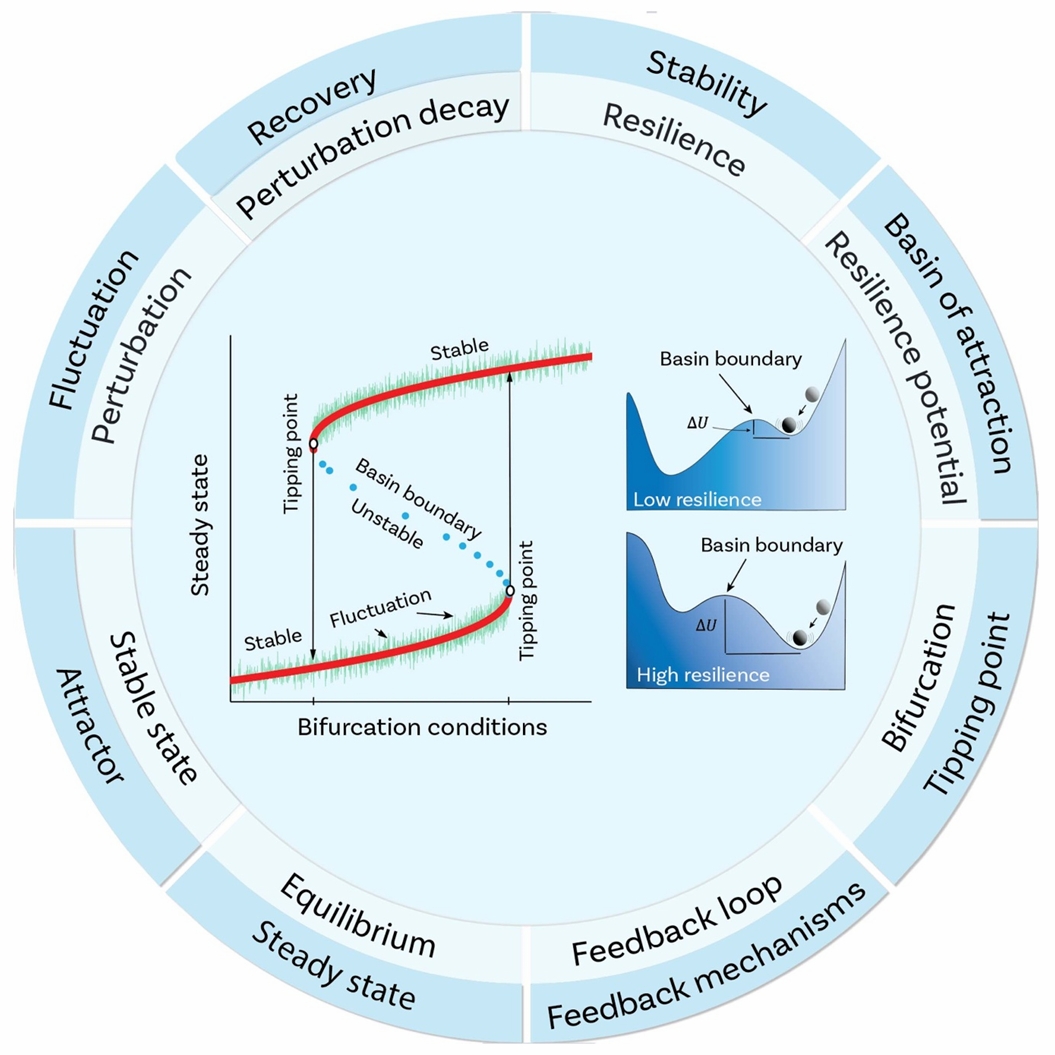A team of international researchers has published a perspective article in Environmental Research Letters, advocating for a commonly accepted definition of resilience and a unified research framework for studying tipping points.
The study, led by Professor Chuixiang Yi of Queens College, City University of New York, brings together experts from top institutions worldwide to address inconsistencies in resilience science and propose a roadmap for future research.
Resilience and tipping points are widely used concepts across disciplines, from ecology and climate science to economics and sociology. However, varying definitions and interpretations have led to fragmented research efforts.
The authors argue that a standardized approach, rooted in dynamical systems theory, is essential for advancing our understanding of how systems respond to disturbances and cross critical thresholds.

Conceptualmappingofresilienceconceptsandtheirrelationshiptodynamicalsystemstheory.Thisfigureprovidesa visualsynthesisofresilienceconceptsandtheircorrespondingtermsindynamicalsystemstheory.
“Without a common framework, our ability to predict and manage tipping points in climate, ecosystems, and socio-economic systems remains limited,” said Professor Yi. “Our work provides guiding principles that can help scientists and policymakers systematically assess resilience and develop strategies for risk reduction.”
The study introduces the ball-and-cup model as a conceptual tool to illustrate system stability, adaptive capacity, and vulnerability. By integrating this with formal mathematical models, the authors propose a structured way to analyze resilience across different scales and disciplines.
The publication features contributions from globally recognized experts, including Professor Deliang Chen from our Department, and researchers from the US, UK, France, Sweden, the Netherlands, Norway, and Australia. Their collective expertise spans climate science, mathematical modeling, and socio-ecological systems, reinforcing the interdisciplinary nature of resilience research.
Beyond theoretical insights, the study sets a research agenda for the future. The authors highlight seven key questions that need to be addressed, including how resilience can be quantified, how feedback loops influence tipping dynamics, and how multi-scale models can bridge local and global system behaviors. Their framework offers a foundation for empirical studies and real-world applications in climate policy, disaster risk management, and sustainability science.
This landmark study is expected to serve as a guiding reference for researchers and decision-makers seeking to mitigate risks associated with climate change and ecosystem collapse. The full article, Principles for Guiding Future Research on Resilience and Tipping Points, is now available in Environmental Research Letters and can be accessed https://doi.org/10.1088/1748-9326/adb7f3.